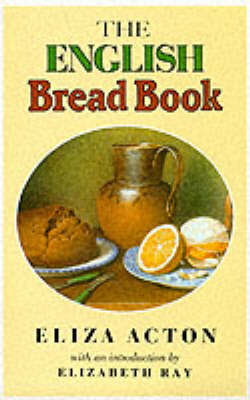Victorian Milk Bread
Welcome to another step-by-step recipe from BreadClub20. Why not drop by our main Facebook page by clicking here.... If you like what you see and enjoy the recipe, we hope you go on to join us by 'Liking' and 'Subscribing'.
Eliza Acton (1799 - 1859) was a poet and food writer. She's best remembered for producing the first domestic cookery book 'Modern Cookery for Private Families' - which introduced the English cook to Brussels sprouts and spaghetti.
In 1857, she produced 'The English Bread Book for Domestic Use'. In the same year, a loaf of bread cost one shilling. We need to remember that labourers earned twelve shillings a week, and often less. Buying bread was expensive and it was not unusual for a poor man to spend nearly all his wages on bread for his wife and family.
Home baking, as advocated by Acton, was on the decline. Although cheaper and healthier than buying from a baker, the poor in urban slums rarely had access to a bread oven and women in mills and factories had little time to bake at home.
'Commercial' bread was of poor quality - many loaves contained alum, to make it whiter and heavier. Alum caused bowel disorders, diarrhoea and could kill young children.
Acton was not a lone voice in the wilderness, but she stood in the vanguard in encouraging changes to the what we ate and how it was prepared. Granted, for many years, she would speak more to the middle classes, but without her lead others might not have followed. Her pioneering work has been recognised widely by many of today's leading food writers and cooks.
The internet is full of recipes for Victorian Milk Bread - many taken from 'Bread' by Eric Treuille and Ursula Ferrigno. There are many variations on a theme.
This is mine, based on the spirit and principles of Eliza Acton, in using the best possible ingredients and in consideration of 'eating well'
Victorian milk bread produces a loaf with a soft crust and crumb. It can be baked in a tin, as a bloomer or as a plait. In this recipe, milk replaces the water.
It keeps well and makes fabulous toast.
INGREDIENTS
Enough dough to choose a combination of tins, boules, bloomers, rolls and plaits.
1 kg strong white bread flour
700 gms tepid semi-skimmed milk
30 gms melted unsalted butter
20 gms sugar (preferably dark sugar)
16 gms crushed sea salt
2 teaspoon active yeast
for the glaze
1 egg well mixed with 1 tablespoon milk.
Optional - poppy seeds
METHOD
Mixing by hand - add all the ingredients and mix thoroughly. Tip out onto a board (no flour) and knead until you have a silky dough. Place in an oiled bowl, in a warm place and allow to double in volume. Then move on to 'next' (see below)
Mixing by stand mixer - add all the ingredients and mix thoroughly. Continue mixing until you have a silky dough. Place in an oiled bowl, in a warm place and allow to double in volume. Then move on to 'next' (see below)
Mixing by bread machine - add all the ingredients and choose a basic dough programme. Then move on to 'next' (see below)
NEXT
Tip the dough out onto a floured board and knock back to remove the air bubbles.
Decide on whether you are shaping the dough for a boule, in a tin, for rolls, for a bloomer or a plait.
Shape as desired and place on a baking tray, in a tin, etc.
Cover, return to a warm place and leave for a second proof. In a tin, the dough should rise to about 3cms above the top of the tin. Rolls will not take as long.
Prepare the egg glaze.
Brush the bread with the egg glaze and, if you wish, sprinkle with poppy seeds.
Bake at 200⁰C (400⁰F) until golden brown and hollow when tapped on the bottom.
Tin loaves should take 25 - 30 minutes
Bloomers about 30 - 35 minutes
Rolls 20 - 25 mins.
Cool on a rack
Happy baking






.jpeg)



Comments
Post a Comment